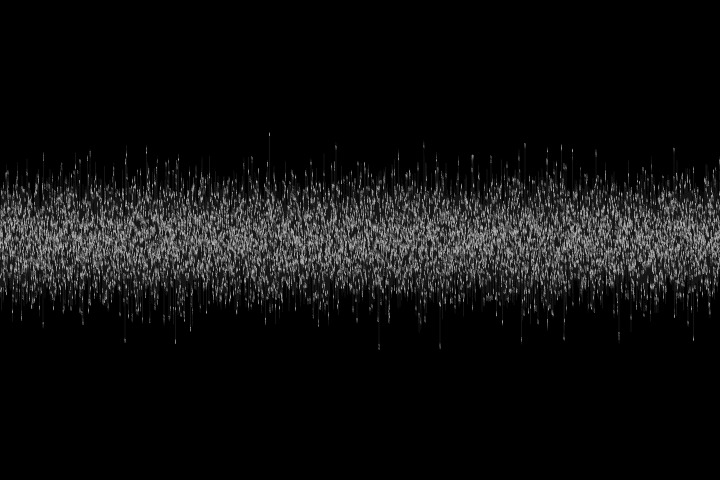Today I played a bit more with the peakiness function but I went back a simple particle system that will evolve over longer periods of time. I borrowed some of the code from yesterday and tried to make it a bit more gradual and I got some interesting results.
I also spent some time today digging into the Java API and found some nice features of Arrays. Sorting is actually quite a nice algorithm and also fill is a great way to just fill up an array with a value. Hooray for not having to write simple things over and over!


import javax.media.opengl.*;
import processing.opengl.*;
import ddf.minim.*;
import ddf.minim.analysis.*;
Minim minim;
AudioInput in;
FFT fft;
int numberofparticles = 10000;
float[] x = new float[numberofparticles];
float[] y = new float[numberofparticles];
void setup()
{
size(720, 480, OPENGL);
background ( 0 ) ;
smooth();
for (int i = 0; i < x.length ; i++)
x[i] = (float) i / x.length * width;
Arrays.fill(y, height/2);
minim = new Minim(this);
in = minim.getLineIn(Minim.STEREO, 512);
fft = new FFT(in.bufferSize(), in.sampleRate());
fft.noAverages();
}
void draw()
{
///------------------------
// SPECTRAL PEAKINESS
///------------------------
// made this up. not accurate but gives interesting data
fft.forward(in.mix);
float sum = fft.getBand(0);
int peak = 0;
float centroid = 0;
for( int i = 1 ; i < fft.specSize() ; i++)
{
sum += fft.getBand(i);
centroid += i * fft.getBand(i);
peak = ( fft.getBand(i) > fft.getBand(peak) ) ? i : peak ;
}
centroid /= sum ;
float peakiness = (float) peak / centroid;
///------------------------
noStroke();
fill(0,6);
rect ( 0,0, width, height );
fill(200,60);
for ( int i = 0 ; i < x.length ; i++)
{
ellipse(x[i],y[i],1,1);
y[i] += random(-peakiness,peakiness);
}
}
void stop()
{
in.close();
minim.stop();
super.stop();
}
void mouseClicked()
{
saveFrame();
}



